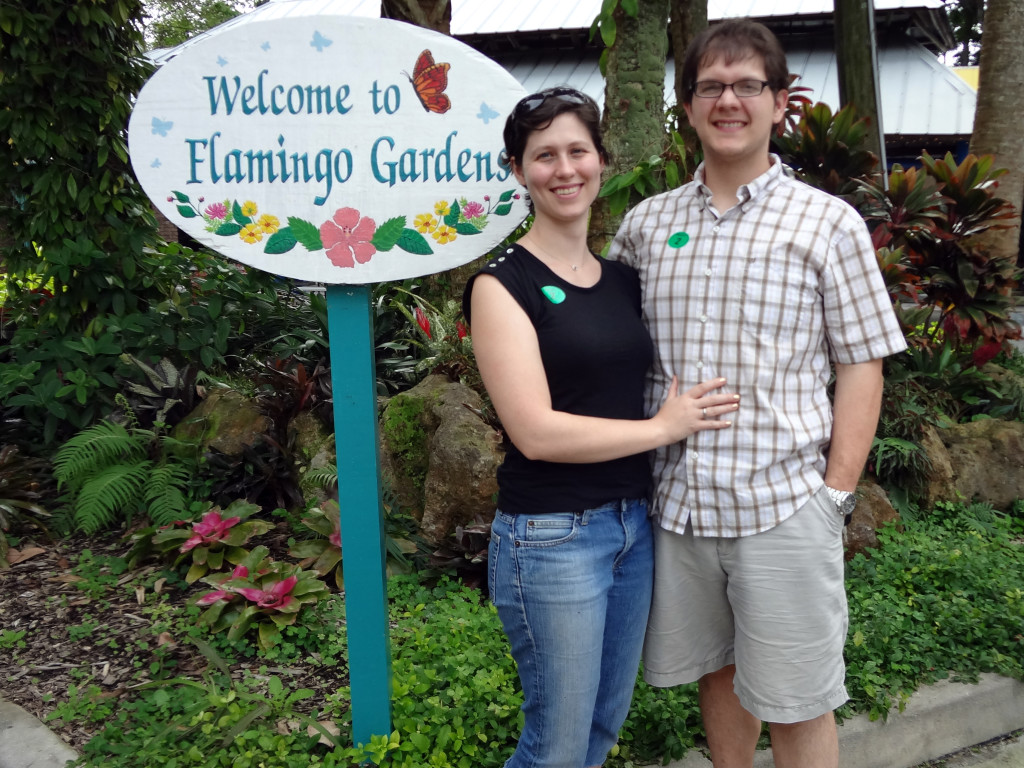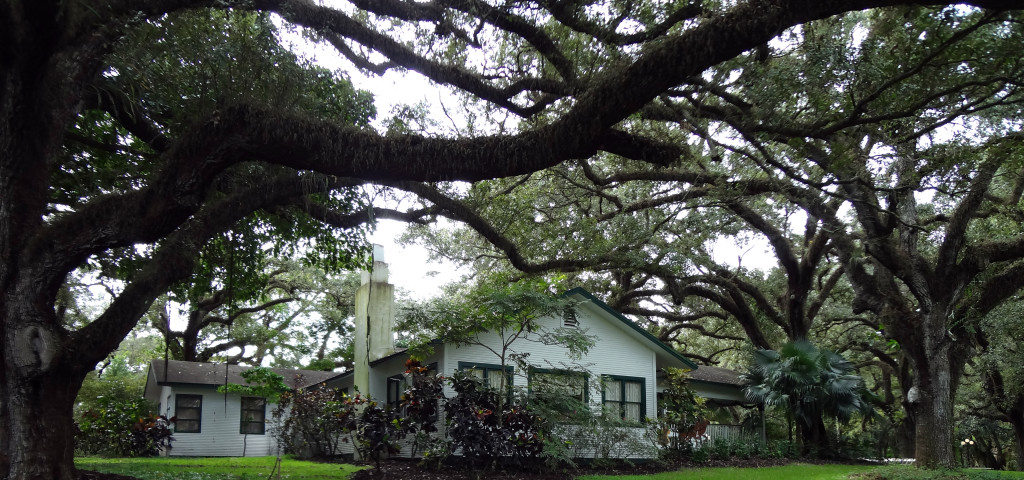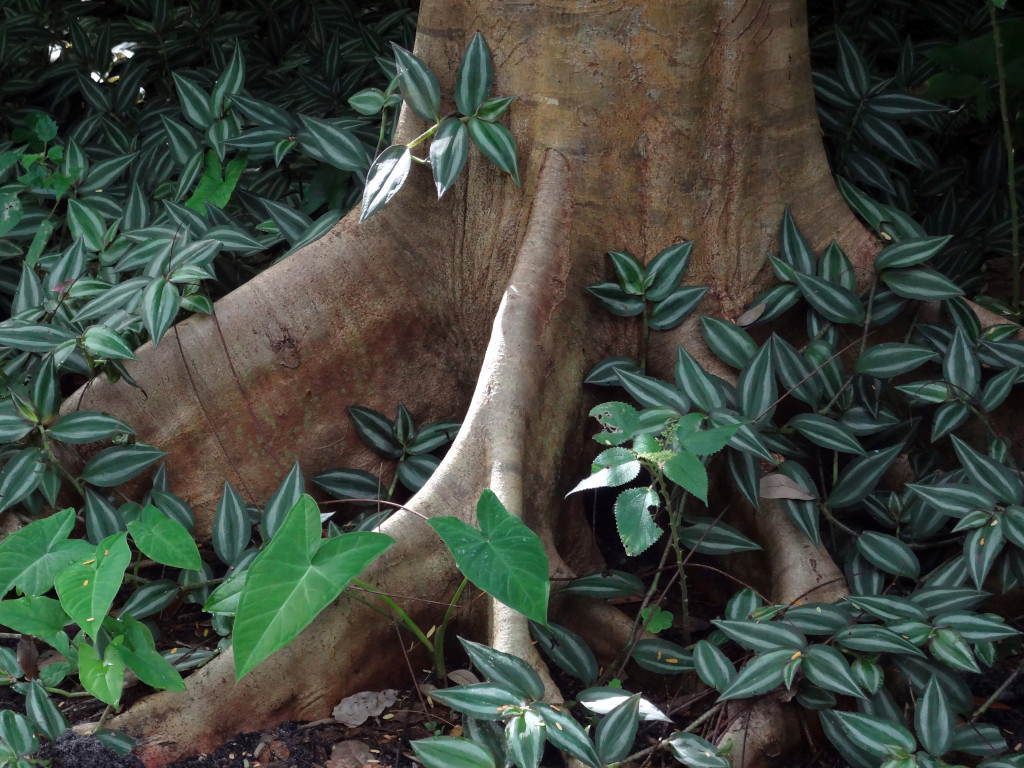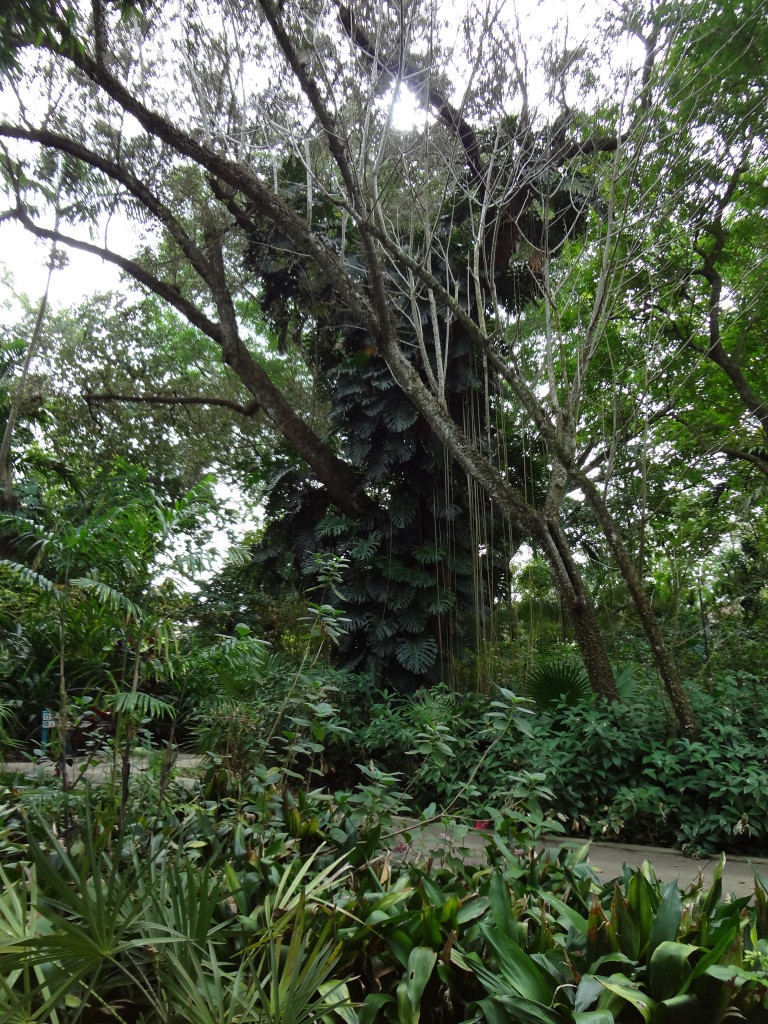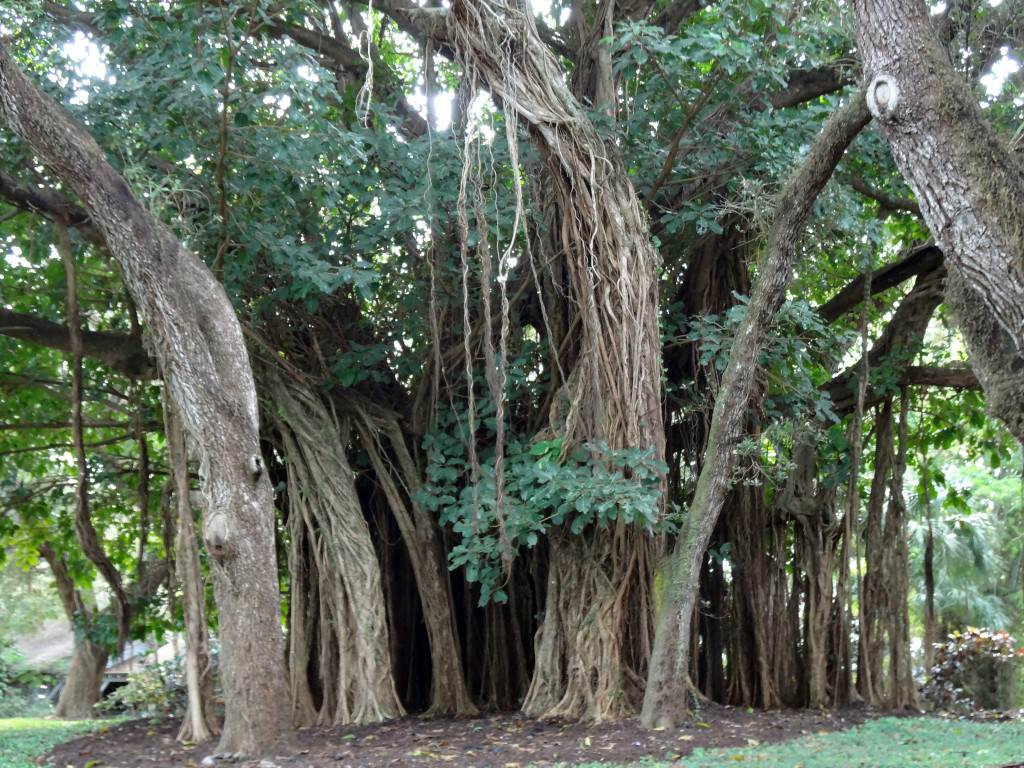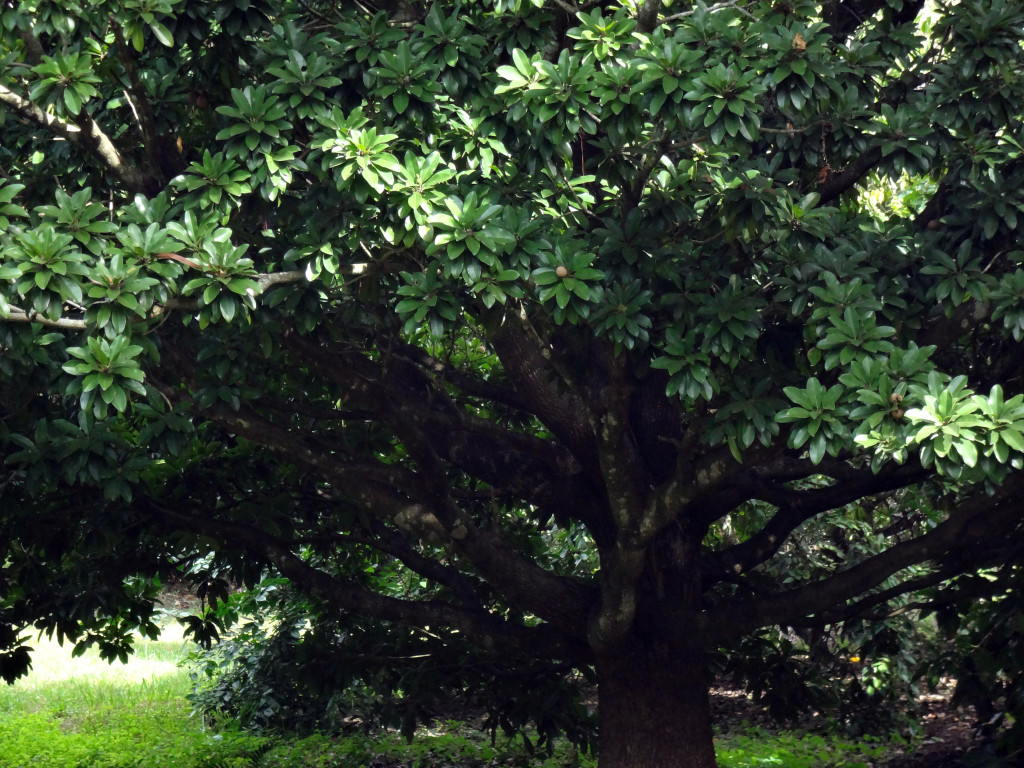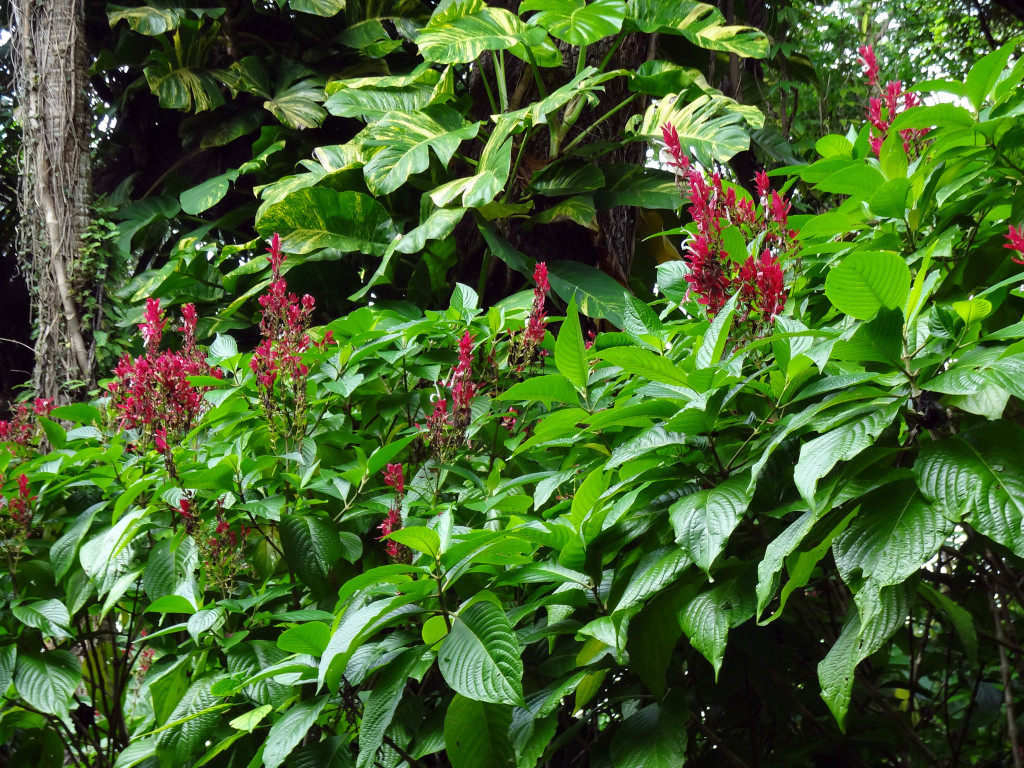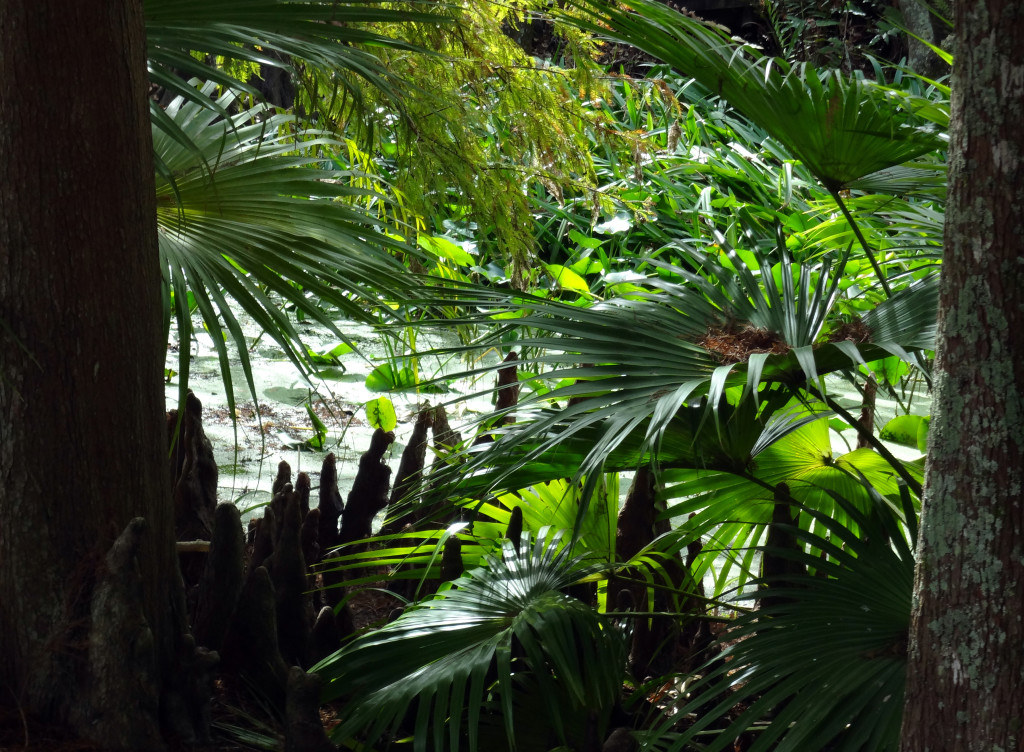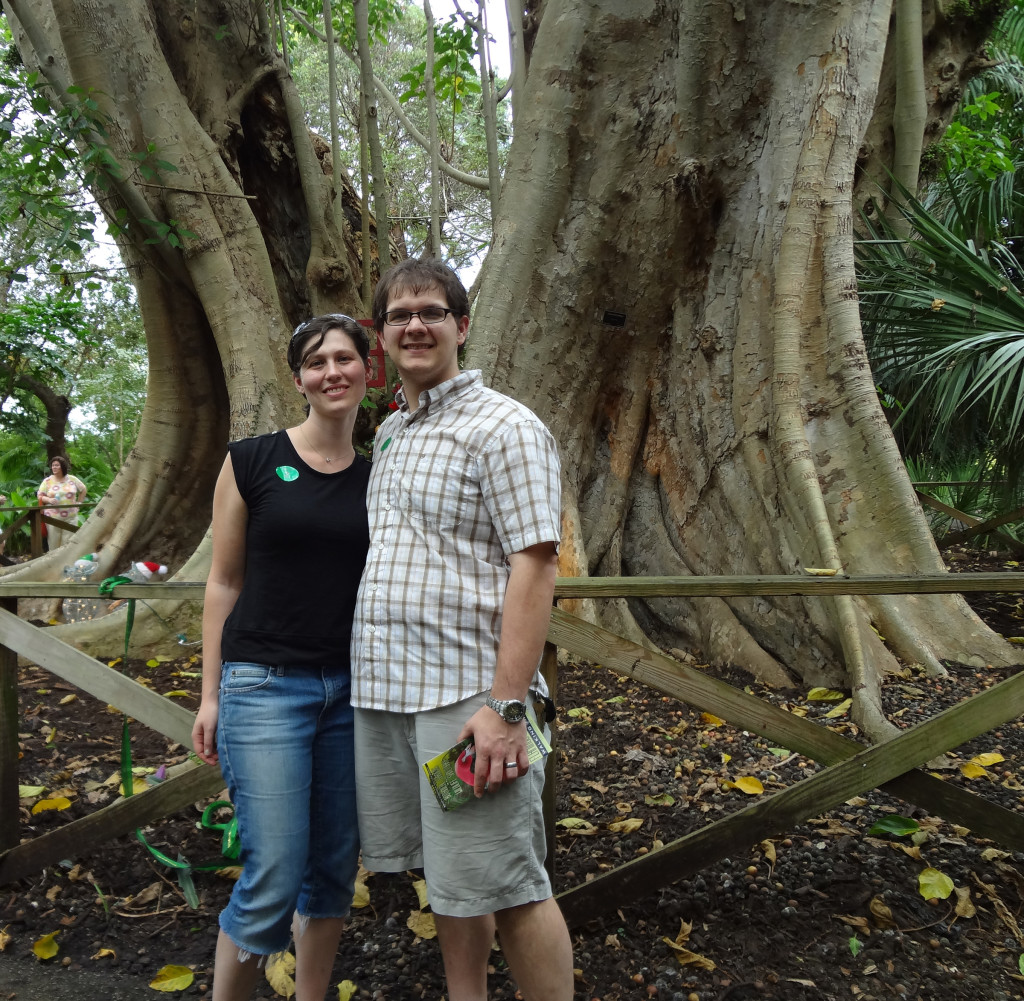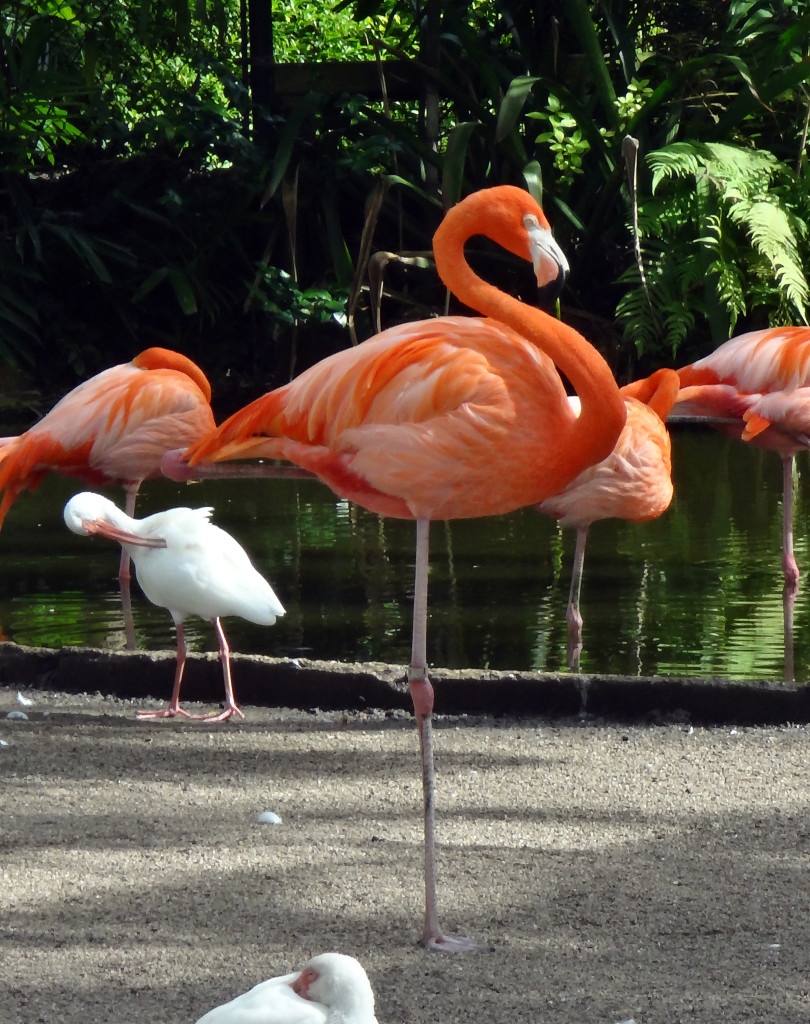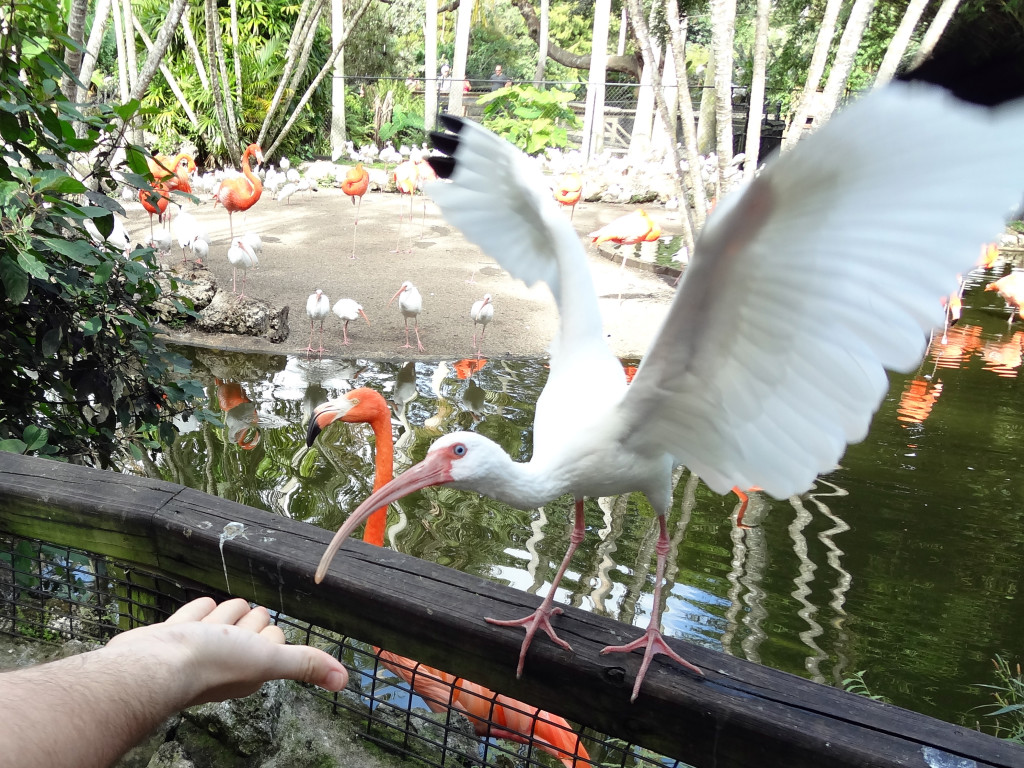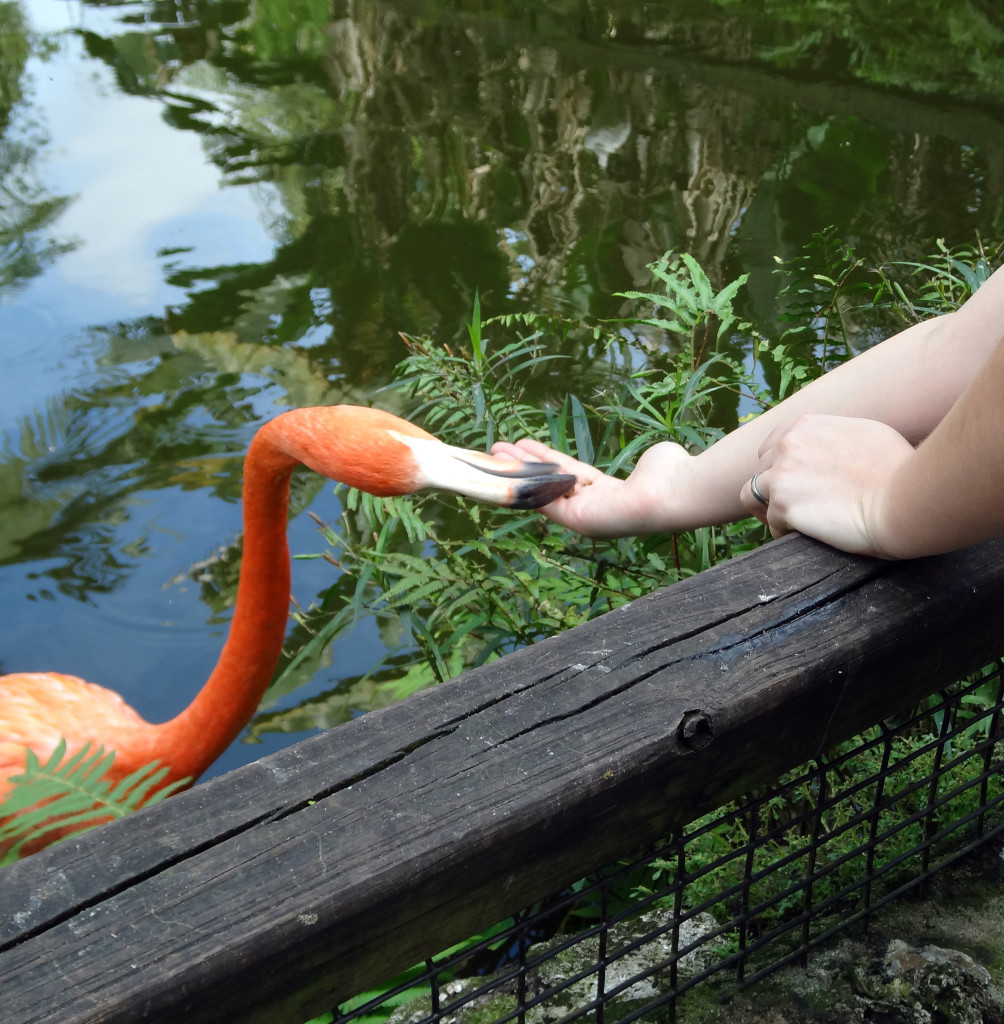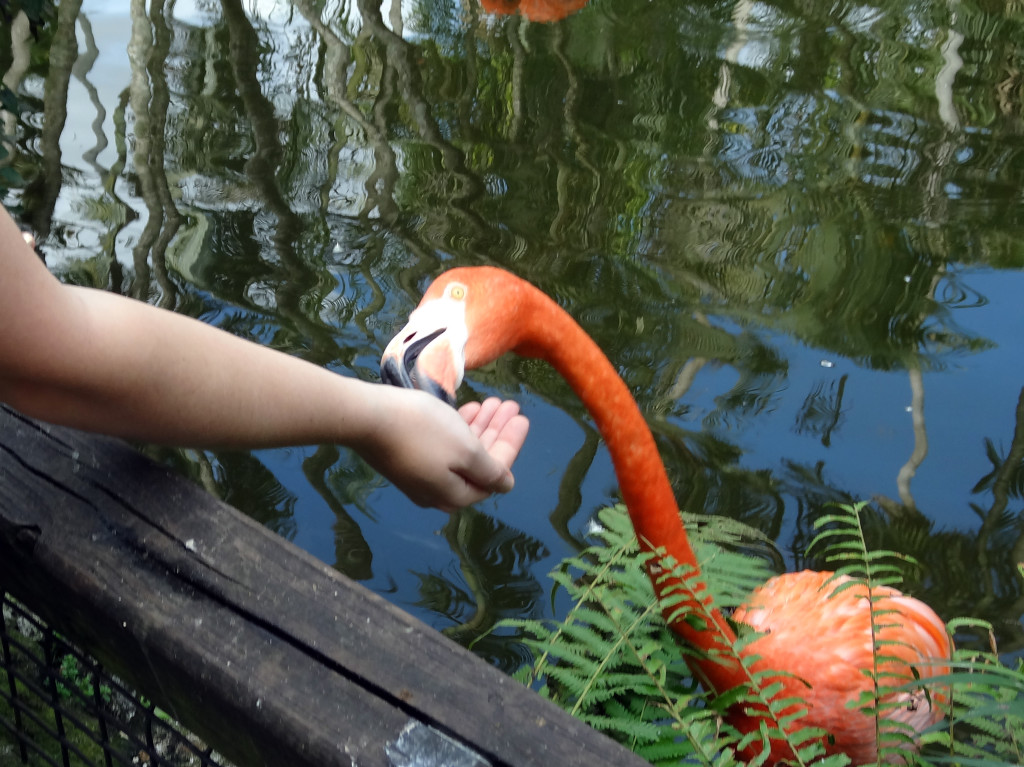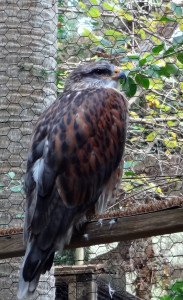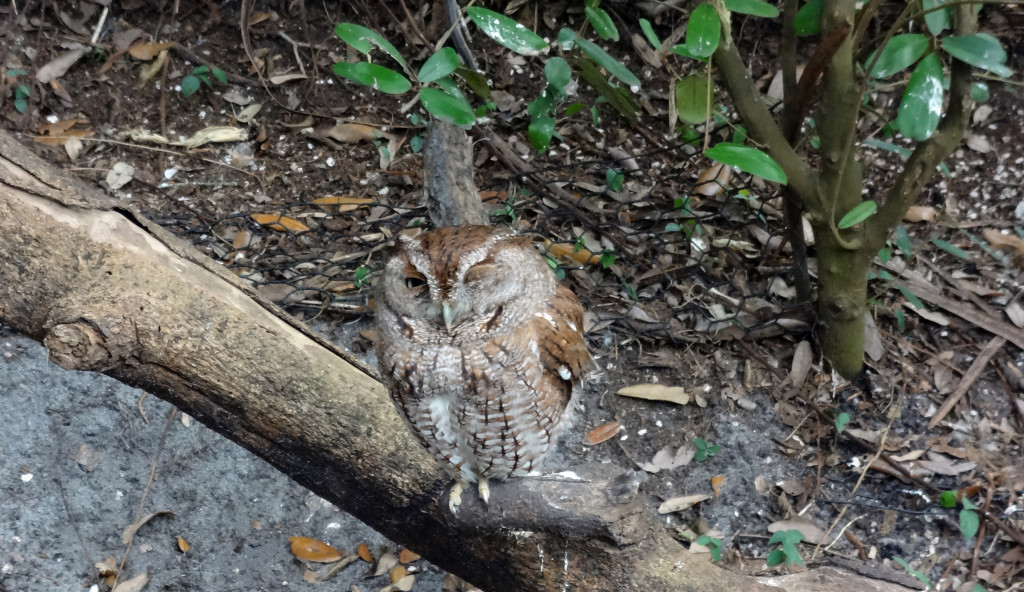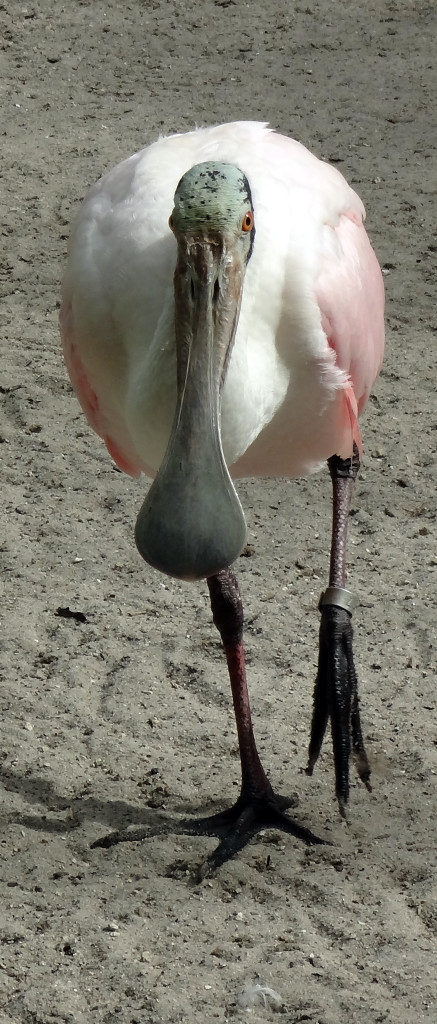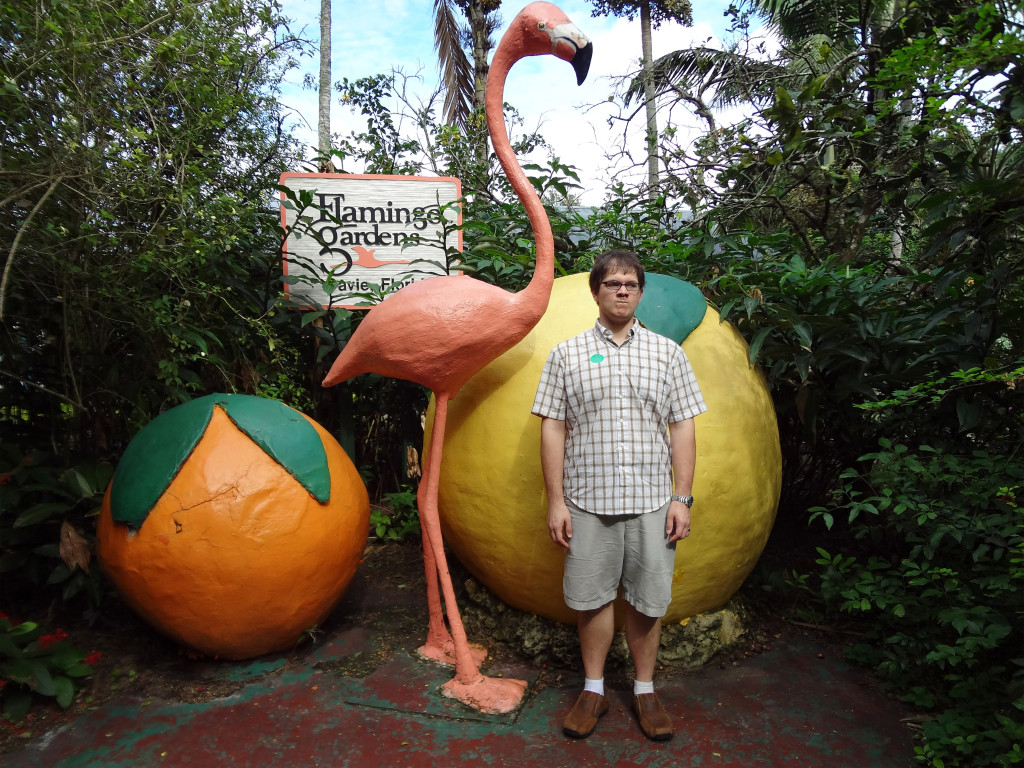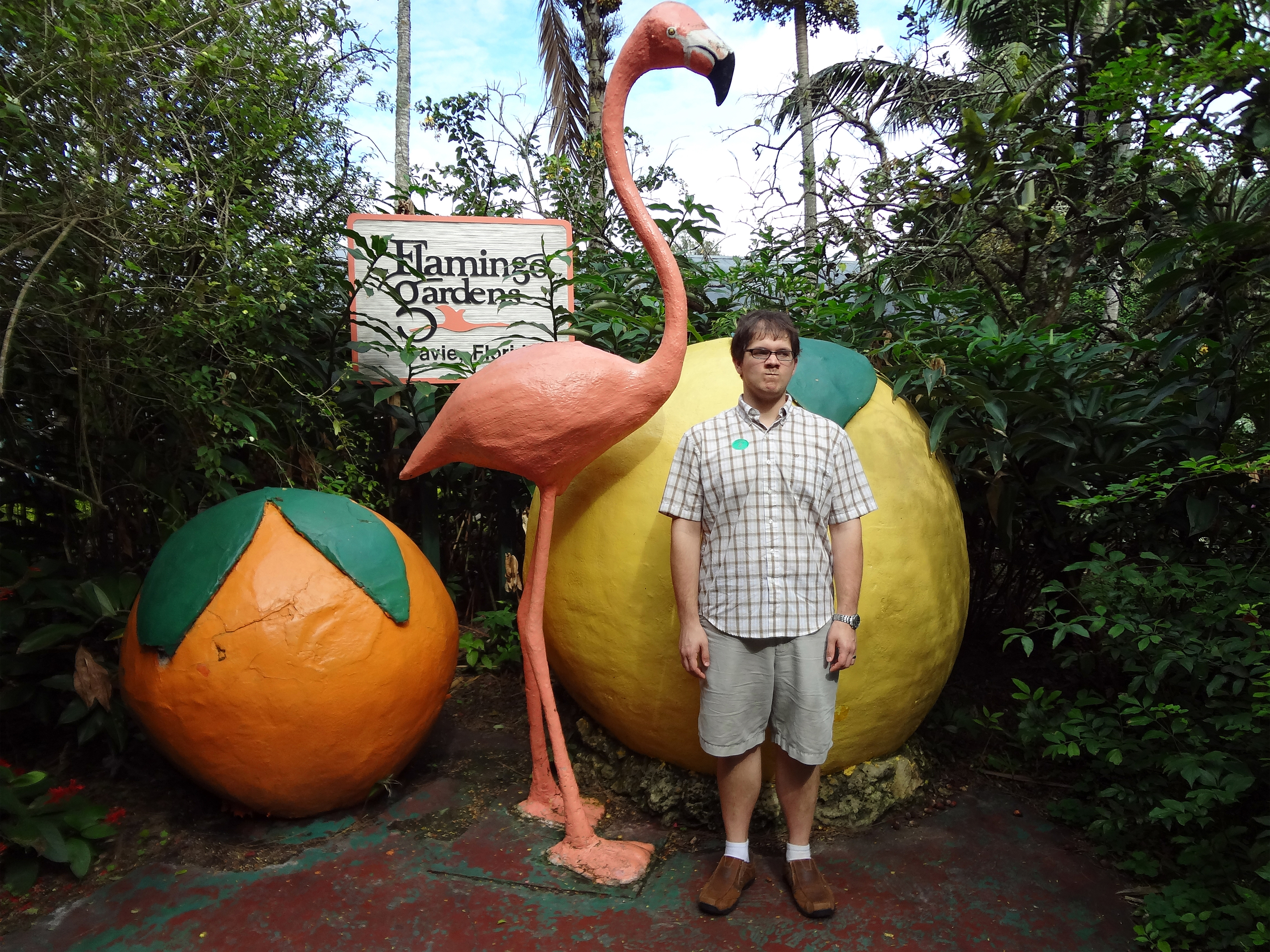
After departing Everglades Holiday Park was the Flamingo Gardens and Wildlife Sanctuary, one of the oldest botanical gardens in the state of Florida, home to 21 tree specimens that are the largest of their species, 200-year-old live oak trees, and a wildlife sanctuary with more than 80 species of native animals and birds.
The first thing we did was get on a guided “train tour” – which was some golf-cart-type seating compartments attached together like a small train, and towed by a Jeep. The guide gave us a history of the Gardens, and a basic overview of the park, pointing out the various plants and animals of interest we passed.
After the train tour, we walked around a bit to see the rest the Gardens had to offer. We started with the flamingo habitat.
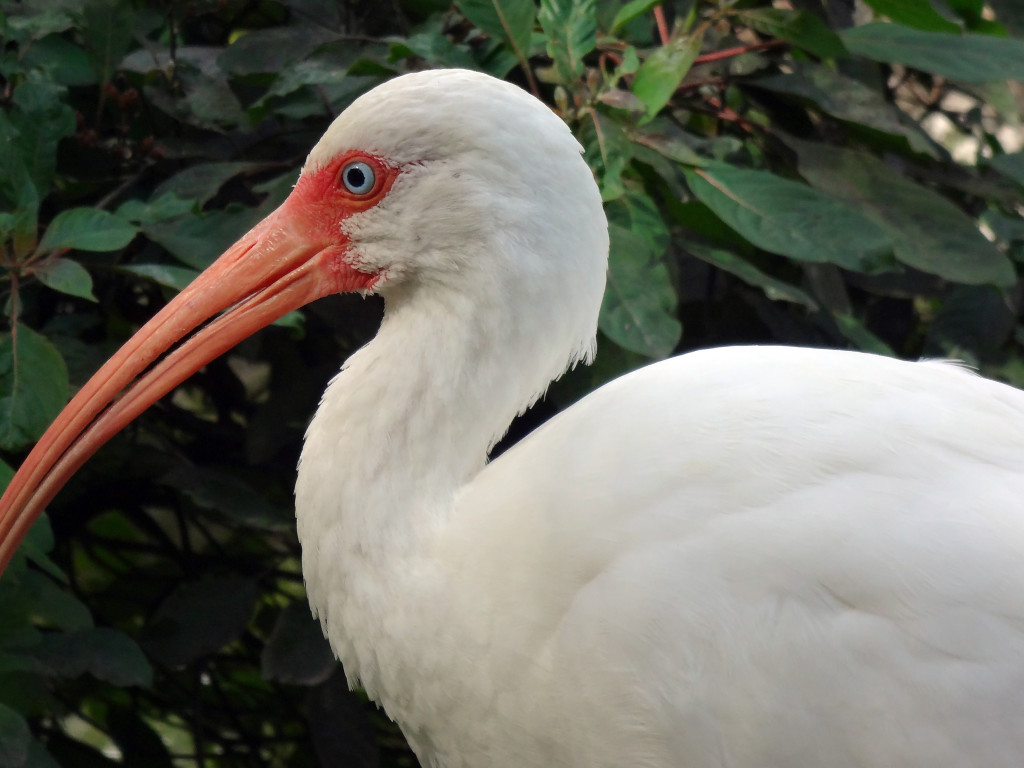
This white ibis was quite hopeful that we would put a quarter in the food machine and give him some!
The gardens, aside from the ibis and flamingo habitat, also had a number of habitats for parrots and native birds, especially permanently injured birds of prey, and a large open-air aviary of other native birds that you could walk through. The aviary was very stinky and poopy, but according to the Flamingo Gardens’ website, the inhabitants of the aviary have produced more than 2,000 offspring that have been released into the wild. So it’s a good thing!
There were also amphibians, reptiles, and big cats, including the Florida Panther (which is quite endangered). They will also soon have a bear habitat and otter habitat, too.
The animals in the park get “adopted” by private individuals to help support their recovery, or care if they are permanently injured. The Flamingo Garden is a nonprofit, so this supplemental income helps them care for the animals they have and make new habitats to help more animals. Pretty neat.
The Flamingo Gardens may seem like a small and humble place when compared to big-city attractions like the Atlanta Botanical Gardens or Atlanta Zoo. And it is… parts of it seem kind of run-down, but it has a lot more history and soul than either of those places. Also, no crushing mobs of screaming children and their inattentive parents. Just sayin’.
We enjoyed our time there. And we got a pretty awesome strawberry-banana smoothie, too. We had such a good time there that we even took a cheery photo to remember it by.
emily
Nerd. Foodie. Gamer. Homecook. Perpetual planner. Gardener. Aspiring homesteader. Direct response graphic designer. I use too many damn commas.
